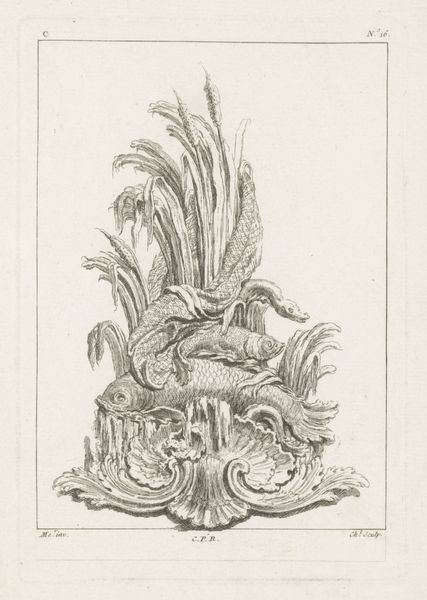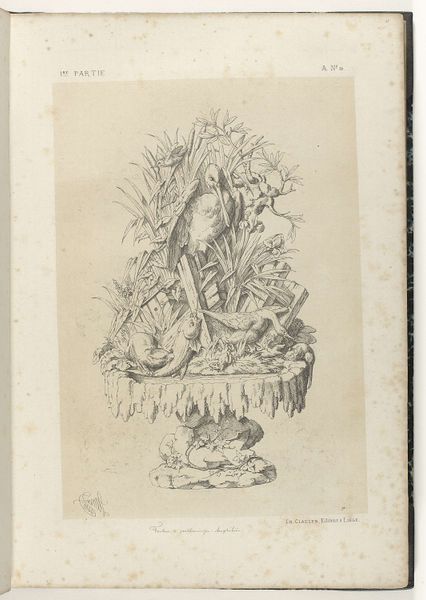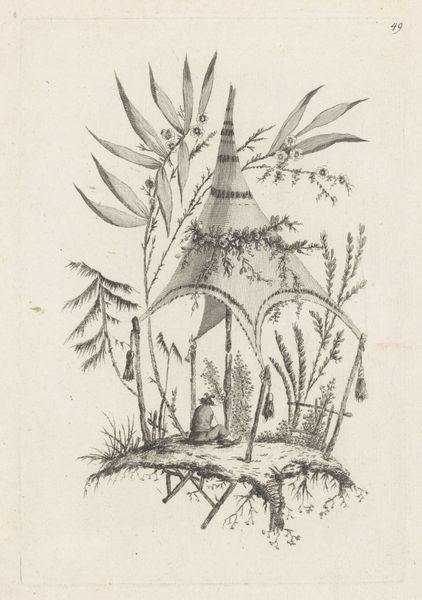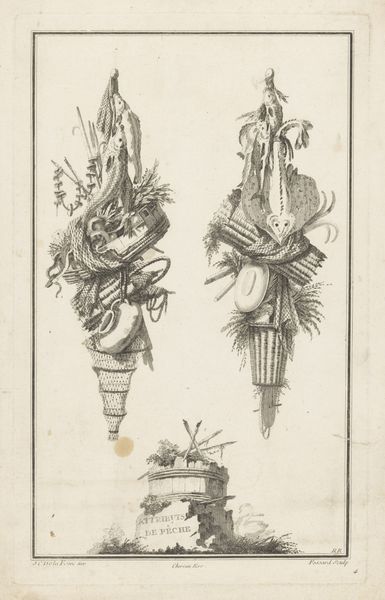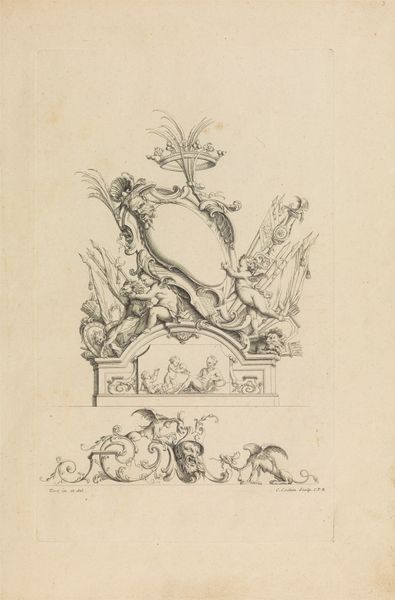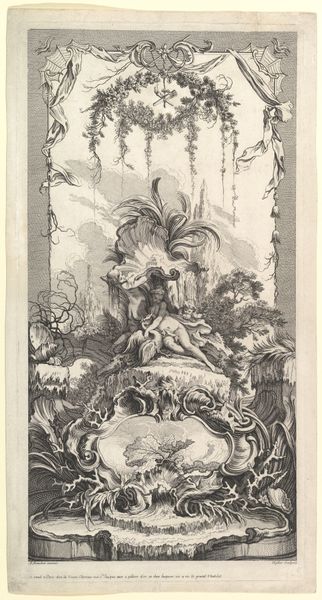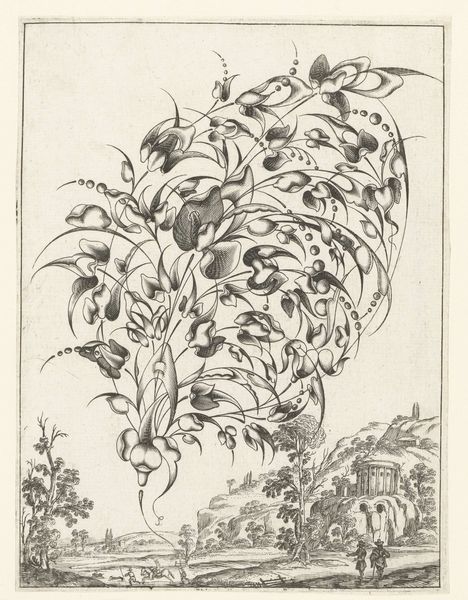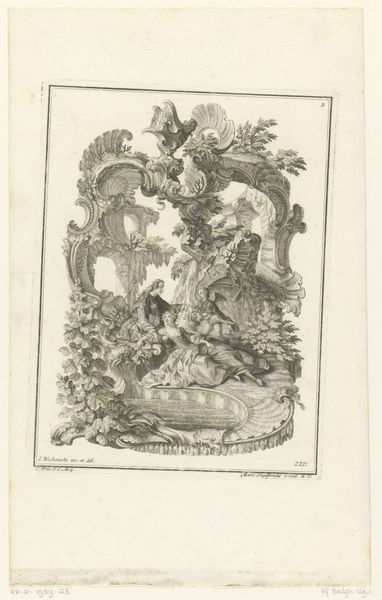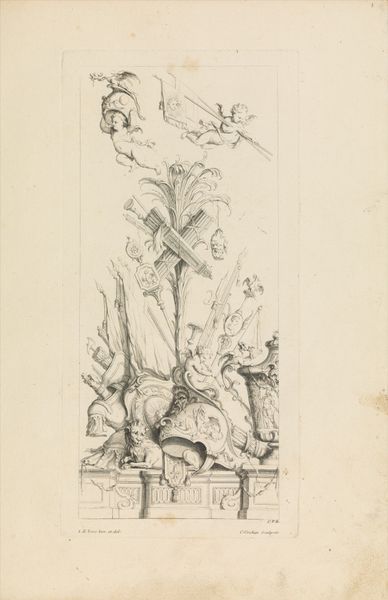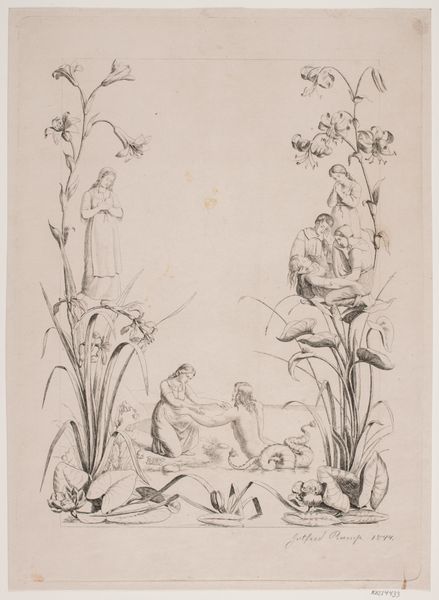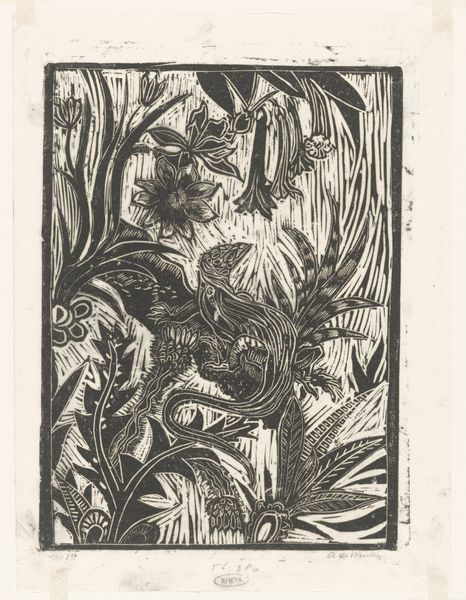
print, engraving
#
baroque
# print
#
genre-painting
#
engraving
Dimensions: height 162 mm, width 112 mm
Copyright: Rijks Museum: Open Domain
Curator: Here we have “Shell Motif with Lobster,” an engraving from between 1738 and 1749, credited to Quentin Pierre Chedel. Editor: My first thought? Restrained exuberance. The detail is incredible, even if limited by the medium. I love the sense of cascading texture. Curator: Chedel, of course, was operating within the Baroque aesthetic, which deeply valued elaborate ornamentation. These shell motifs were popular for all kinds of decorative arts and architectural embellishments at the time. Editor: Indeed. Tell me more about how this kind of image circulated—its role as an art object. I find this emphasis on surfaces quite interesting. Was it common for printmakers to draw inspiration from the genre painting or was there maybe another goal? Curator: Well, engravings such as these were integral for disseminating design ideas to artisans, like furniture makers or silversmiths, lacking direct access to courtly or aristocratic aesthetics. In a sense, they democratized design, influencing material culture across wider society, far beyond the court where genre paintings would flourish. Editor: So, it's functional art? A kind of visual instruction manual of the time. It prompts the question, who got to decide which styles and aesthetics were broadly promoted, and on what basis? Curator: Precisely. The engraving has its own elegance. Note the detail in the lobster's carapace, rendered meticulously. Also consider how he contrasted the organic, asymmetrical lines of the shellfish against the stylized patterns beneath. Editor: Good point. The shells definitely draw the eye—it’s an obvious focus. The shadows too give depth, creating such a lovely visual weight that stops it feeling static despite its lack of motion. I do wonder, were there cultural values in the Baroque period informing what details mattered, how and why an engraver decided which details of everyday life and objects were elevated to something "beautiful?" Curator: Those are intriguing avenues of inquiry indeed! Considering both its design purpose and aesthetic choices helps us appreciate the depth behind even what may seem like mere ornamentation. Editor: Absolutely. Reflecting on both its role and qualities gives me a broader appreciation for it, far beyond just another print of decorative style!
Comments
No comments
Be the first to comment and join the conversation on the ultimate creative platform.
